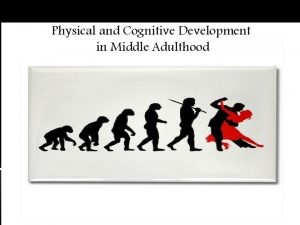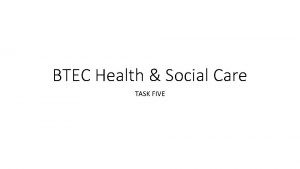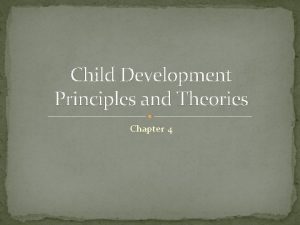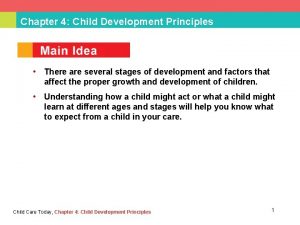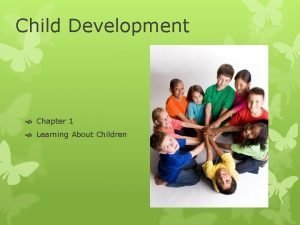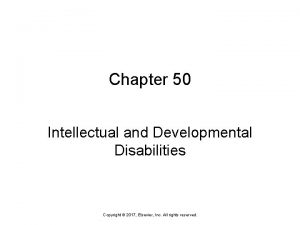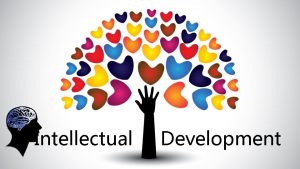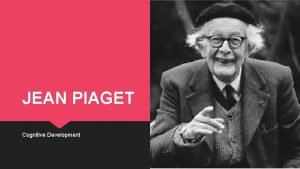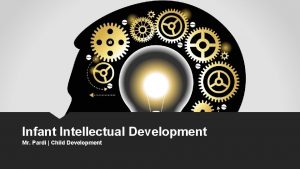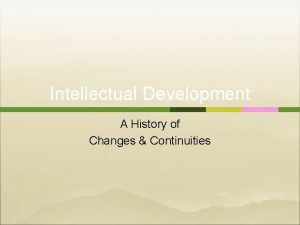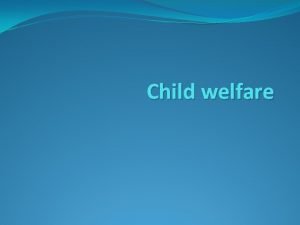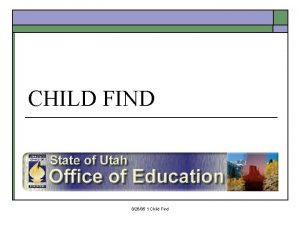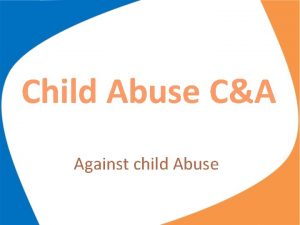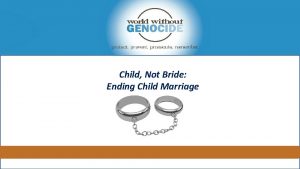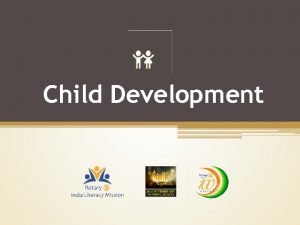Child Development I Chapter 9 Intellectual Development the
























- Slides: 24

Child Development I Chapter 9: Intellectual Development the First Year

1. Neurons are… n Nerve cells

2. Neural pathways are… n Links between neurons that allow the brain to control body functions and thinking processes n They form in response to experiences

3. Both a newborn and a six-month-old may kick their covers off if they feel warm. How is this response different? The newborn’s response is a reflex n The six-month-old’s response is a learned response n

4. After stacking blocks repeatedly, a baby becomes skilled at stacking them quickly. How does the development of connections in the brain explain this skill? Repetition makes the connections stronger n The neurons work together so well that it becomes easy for the child to do the action or task n

5. What can a caregiver do to help the development of a baby’s brain pathways? Since the connections are a direct result of sensory input, providing a child with a variety of activities that stimulate all the senses will help build pathways. n Repetition and active participation of the child will help n

6. How is perception related to learning? n Perception is the ability to learn from information received through the senses

7. Four intellectual abilities that babies develop the first year… n n Memory---crying babies may calm down when a caregiver approaches because they remember being comforted Associations---a baby links being fed with feeling better Cause and effect---a baby learns that letting go of an object causes it to fall Attention span---a baby enjoys playing with a new object longer than one that’s very familiar.

8. According to Piaget… n All children progress through the four stages in the same order, although the actual ages when they go through the stages may vary

9. Piaget’s four periods of intellectual development… n n Sensorimotor---birth to 2 years---learn through senses and own actions Preoperational---2 -7 years---think in terms of their own activities and what they perceive at the moment Concrete operations---7 -11 years---can think logically but still learn best through experience Formal operations— 11 years-adult---capable of abstract thinking

10. Keesha drops her toy and it rolls behind a chair. She realizes that the toy must be somewhere, even though she can’t see it, so she crawls to look for it. What has Keesha learned when she drops her toy? n Keesha has learned the concept of object permanence

11. ______ makes it possible for children to eventually learn to read. Symbolic thinking n This develops around 18 -24 months n

12. Two things a caregiver can do to build an infant’s sense of security and trust… Hugs n Kisses n Cuddling n

13. Concepts are… n General categories of objects and information

14. Three stages a child goes through as they learn words and concepts… Stage 1 ---labels are for whole objects, not parts n Stage 2 ---Labels apply to the group, not to the individual objects in the group n Stage 3 ---An object can only have one label n

15. How does responding to a child’s cry help the child’s intellectual development? n When parents respond consistently, the child learns a pattern n Hunger comes, baby cries, parent feeds baby, baby feels better

16. How can learning about average child development help parents and other caregivers encourage learning? It enables them to choose toys and learning experiences that are age appropriate. n Helps them form realistic expectations of what the child can do n

17. How does talking to infants benefit them? Helps them learn about their environment n Helps their brains develop faster n Helps to build feelings of security n

18. Why is childproofing the home better for intellectual development than keeping crawling or walking babies in playpens? Babies learn by exploring the world n Babies need as much freedom of movement as possible to explore n

19. Play benefits baby… By strengthening their muscles n By refining their motor skills n By helping them learn about the world n

20. Good toy for twelve-month-old baby and not four-month-old baby. n Push and pull toys are good for the twelvemonth-old babies who are walking because they can manipulate them. n They are not appropriate for a four-month-old baby because infants of that age have fewer finemotor skills and are more involved in learning through touch

21. Babies communicate before they can use words by… Crying n Movements and gestures n Other sounds—giggles and coos n

22. Avoid using baby talk because… Children are very good at repeating what they hear n Learning ‘baby’ talk first makes regular speech more difficult later to learn n

23. Average ranges for the following speech milestones… Puts two words together------ 1 -2 years n Voices excitement and displeasure--- 4 -6 months n Talks about activities---3 -4 years n Says one or two words--- 7 months-1 year n Tells stories--- 4 -5 years n
 Chapter 9 intellectual development in the first year
Chapter 9 intellectual development in the first year Intellectual development in middle adulthood
Intellectual development in middle adulthood Late adulthood intellectual development
Late adulthood intellectual development Physical development early adulthood
Physical development early adulthood Intellectual meaning health and social
Intellectual meaning health and social Perry's theory of intellectual and ethical development
Perry's theory of intellectual and ethical development Intellectual development characteristics
Intellectual development characteristics 이진트리 복사 순회
이진트리 복사 순회 Child development chapter 4
Child development chapter 4 Child development principles and perspectives
Child development principles and perspectives Chapter 1 learning about children
Chapter 1 learning about children Chapter 50 intellectual and developmental disabilities
Chapter 50 intellectual and developmental disabilities Hát kết hợp bộ gõ cơ thể
Hát kết hợp bộ gõ cơ thể Lp html
Lp html Bổ thể
Bổ thể Tỉ lệ cơ thể trẻ em
Tỉ lệ cơ thể trẻ em Gấu đi như thế nào
Gấu đi như thế nào Glasgow thang điểm
Glasgow thang điểm Chúa sống lại
Chúa sống lại Các môn thể thao bắt đầu bằng từ đua
Các môn thể thao bắt đầu bằng từ đua Thế nào là hệ số cao nhất
Thế nào là hệ số cao nhất Các châu lục và đại dương trên thế giới
Các châu lục và đại dương trên thế giới Công thức tính thế năng
Công thức tính thế năng Trời xanh đây là của chúng ta thể thơ
Trời xanh đây là của chúng ta thể thơ Mật thư tọa độ 5x5
Mật thư tọa độ 5x5

